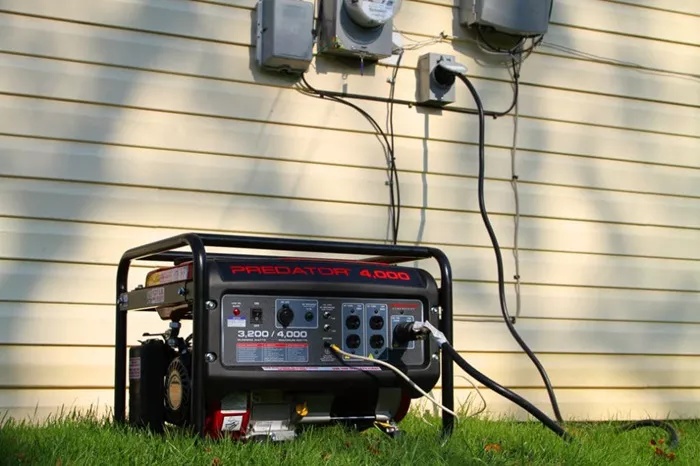Home generators provide backup power during outages, keeping essential appliances running and ensuring comfort and safety. If you’re considering purchasing one, understanding the average cost and key factors affecting pricing is crucial. This guide explores generator types, installation expenses, and essential electrical considerations to help you make an informed decision.
Types of Home Generators & Their Costs
Generators vary in size, fuel type, and power output, directly impacting their price. Below are the most common types:
Portable Generators
Average Cost: 500–4,000
Portable generators are the most affordable option, ideal for short-term power needs. They run on gasoline, propane, or diesel and typically provide 3,000 to 8,500 watts—enough for essentials like refrigerators, lights, and small appliances.
Pros
- Lower upfront cost
- Easy to move and store
- No permanent installation required
Cons
- Manual operation (must be started during outages)
- Limited power output
- Requires fuel storage
Inverter Generators
Average Cost: 800–4,500
Inverter generators are a quieter, more efficient version of portable generators. They produce clean, stable power suitable for sensitive electronics like laptops and medical devices.
Pros
- Fuel-efficient
- Quiet operation
- Safe for electronics
Cons
- Higher cost than standard portable models
- Limited to mid-range power needs
Standby Generators
Average Cost: 2,000–10,000+ (excluding installation)
Standby generators are permanently installed and automatically turn on during a power outage. They connect to your home’s electrical system and run on natural gas or propane, offering 7,000 to 20,000+ watts.
Pros
- Automatic operation
- High power capacity
- Long-term reliability
Cons
- Expensive upfront and installation costs
- Requires professional setup
Factors Affecting Generator Costs
Several factors influence the total cost of a home generator:
Power Output (Wattage)
The more wattage a generator provides, the higher the price. Calculate your home’s power needs by adding the wattage of essential appliances (e.g., refrigerator: 600W, furnace: 800W, lights: 300W).
Fuel Type
Gasoline: Cheaper but less efficient, requires frequent refueling.
Propane: Cleaner burning, longer shelf life, but needs a large tank.
Diesel: High efficiency, good for heavy-duty use, but noisy.
Natural Gas: Convenient if connected to a gas line, but installation is costly.
Installation Costs
Standby generators require professional installation, which can add 1,500–5,000+ to the total cost. This includes:
- Electrical wiring
- Fuel line connections (for gas/propane)
- Concrete pad or mounting
Transfer Switch
A transfer switch safely connects the generator to your home’s electrical panel. Costs range from 500–1,500, depending on whether it’s manual or automatic.
Brand & Features
Reputable brands like Generac, Kohler, and Honda may cost more but offer better reliability and warranties. Additional features like remote monitoring or Wi-Fi connectivity also increase the price.
How to Choose the Right Generator
Assess Your Power Needs : List essential appliances and calculate total wattage.
Decide on Fuel Type : Consider availability, cost, and storage.
Choose Between Portable or Standby : Budget and convenience play a role.
Get Professional Installation Quotes : For standby models, compare licensed electricians.
Conclusion
The average cost of a home generator ranges from 500 for a basic portable unit to10,000+ for a whole-house standby system. Factors like power output, fuel type, and installation significantly impact pricing. By understanding your needs and comparing options, you can find the best generator to keep your home powered during outages.
Investing in a generator ensures safety and convenience, making it a worthwhile consideration for homeowners in areas prone to power disruptions.

